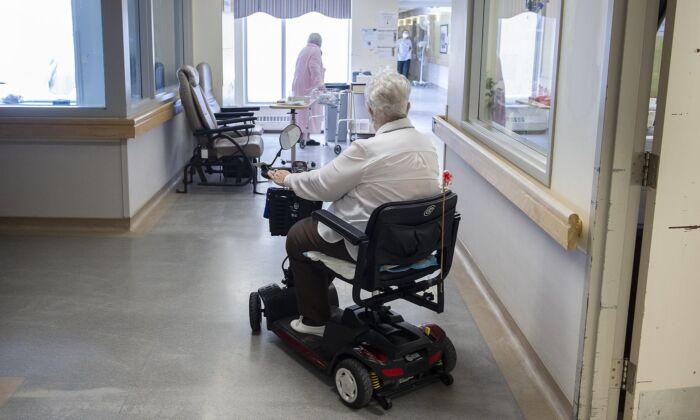Canada’s rapidly changing demography is daunting. The number of people over 65 increased from 3,888,550 in 2001 to 7,021,430 in 2021, an increase of 81 percent. Over the same 20-year period, the Canadian population increased by 23 percent, from 30,007,090 to 36,991,980. At present, people over 65 represent almost one in five Canadians.
The sector most affected by this demographic shift is the health-care system, which is already under considerable pressure.
Another important trend is also affecting the health-care system. Increasingly, fewer children and grandchildren of older Canadians are living in the same communities as their parents and grandparents. This means that fewer relatives can attend to their increasingly pressing needs.
My wife has been in a wonderful care home, Misericordia Place, Winnipeg, for almost three years. I visit her several times a week, and often ask other residents how they are doing.
Generally, I hear two replies, “I’m still alive” and “Not bad for being in jail.” These responses are, of course, meant to be funny, showing that these people still have a uniquely human sense of humour.
In jails, inmates are restricted by steel bars and locked doors. Care homes use a similar system to keep residents from “wandering.” There is an electronic monitoring system that does not allow residents to open some doors or to use elevators unless they know the security code. Residents’ safety is, of course, the major concern.
This is the most important similarity, but there are a few crucial differences.
One difference is obvious. Criminals wear prison clothing—orange jumpsuits—while care home residents wear their own clothing. But most care home residents use walkers or wheelchairs, which distinguishes them from the staff.
A second obvious difference is that jails are filled, for the most part, with young men while care homes are generally filled with old women.
A third difference is not obvious, but the food in jails must be better than in many care homes. If it were not, there would be more prison riots. Most care home residents can barely complain, so rioting is out of the question.
Importantly, many care home residents have poured their lives into building this country, creating businesses, teaching children, raising families, and supporting churches and social service agencies. Prisoners, on the other hand, have taken more from society than they have contributed. This is why they are in jail.
Fifth, care home employees are often—but not always—more empathetic and supportive than prison guards. In the Misericordia, my wife calls her nurses and health care aides “angels” because they are extremely helpful, encouraging her to do as much as she can on her own. She loves them, and they love her.
Finally, most prisoners will get out, especially if they have credit for good behaviour. Care home residents, it is sad to say, only get out when they die. So, care home residents truly have life sentences.
Can we do anything to improve the lives of care home residents?
Yes, we can do a few things to put more meaning into their lives.
Most importantly, there needs to be more social interaction between care home residents and other people. Many residents would appreciate religious services once or twice a week. In this respect, churches, service organizations, and schools could organize more visits to care homes. For example, schools and churches could start an “adopt a grandmother or grandfather initiative.” A hug or a soft touch from a child or an adult, is the kind of interaction that makes us truly human.
Some care homes have set up pre-schools in their buildings with residents helping children learn to speak, read, and write in English and/or French, for example. Also, care homes could provide space for community choirs to practice and give performances. Can you imagine how residents would respond to uplifting music?
Care homes could also help residents with similar interests and abilities socialize with each other even if they are on different floors or wards. Some residents could also help staff do things, like folding towels or cleaning tables, that would give meaning to their lives while improving the lives of staff and other residents.
Finally, a variety of recreational activities could be organized every day, including weekends and holidays. Volunteers and relatives could help residents who want to watch sports or movies on TV in the common rooms. Of course, residents need both other people and mental and physical activities to keep them engaged, using their minds and bodies to the best of their abilities.
As time passes, the dilemma of engaging care home residents so their lives are enriched is not going to decrease. In fact, in the future more Canadians will live in these facilities with few, if any, relatives living within commuting distances.
It is time to move beyond the indifference we have shown towards care home residents and integrate them more fully into the broader Canadian society. Surely, the last few years of their lives should be spent with dignity and comfort in a supportive community.







